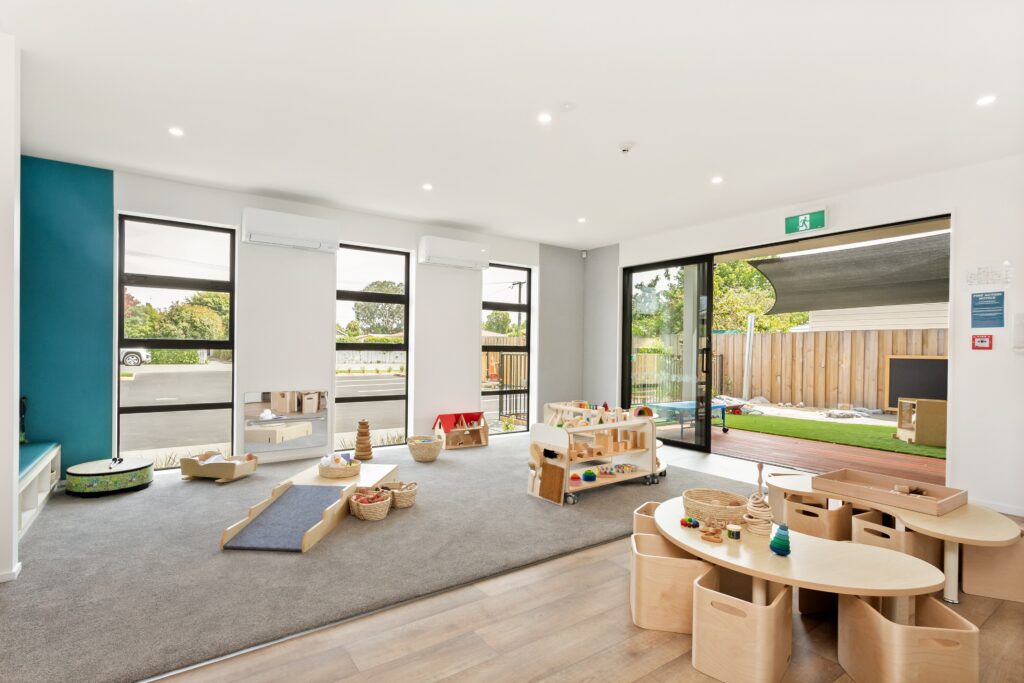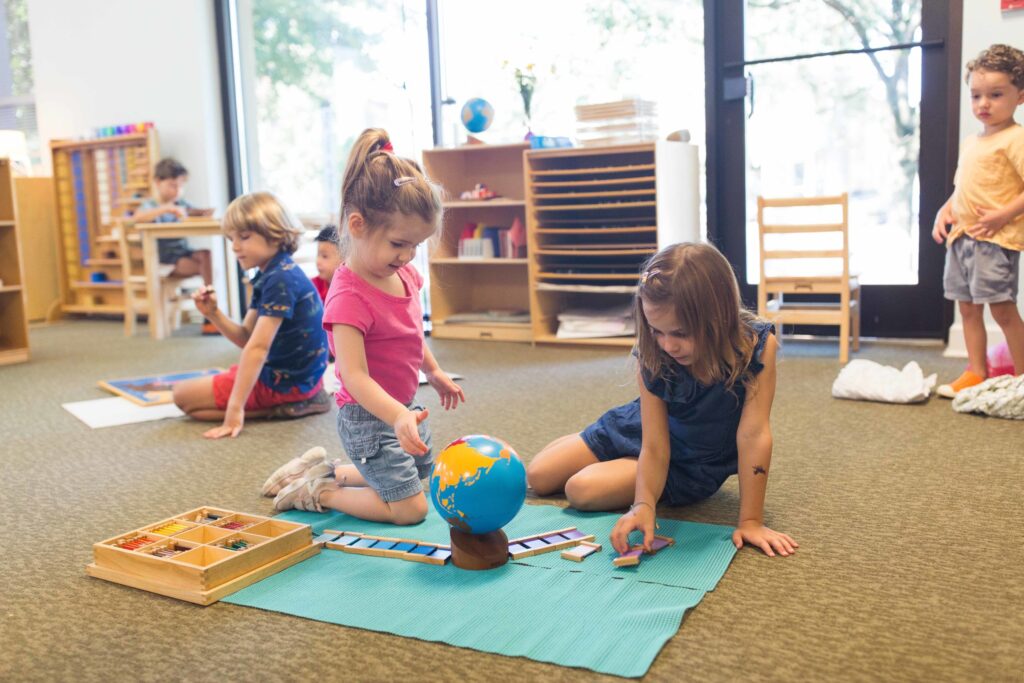Step by Step Guide for Setting up a Montessori
Building a Montessori from scratch is no small thing. The responsibility of shaping the young minds to be independent, brave and confident is a duty that should be taken seriously. If you are looking to start a Montessori in your school and feeling overwhelmed with all that’s required then worry not! This article is for you.
Here we will cover all the details of setting up a Montessori in the form of a step by step guide. You will also find mentions of online resources you can use to build a great setup where young minds can flourish!
To make it easier to discuss the various areas to work on while establishing Montessori, we have divided the process into 3 areas, which are as follows:
- Building the infrastructure.
- Marketing your school to the public.
- Designing the curriculum for different levels of education.

Building the Physical Infrastructure — Furniture and Materials
Once you have the idea of creating a Montessori school and gather the required finances, the next step is to find the land and the basic resources such as furniture and interior designing. Decide if you are going to buy the land, lease or rent it. Run a long term financial analysis to determine the best approach. You can buy an old building and renovate the place, or get a construction team to flip it to save money but still get a great building to start your Montessori in.
The location you choose should be easily accessible for school buses or carpool lanes and the area should be safe for children with enough space to play outside and plenty of rooms inside.
Xiair kids and Xiha Montessori have great deals for wholesale Montessori materials you can buy.
The classroom model in a Montessori school is open and stimulating, unlike the traditional classroom with relatively plain walls with a few posters and filled with desks for students. Each classroom should signify the importance of the subject whether its arts and crafts or science.
The materials you’ll need for a Montessori include:
- Sensorial studies: cylinder blocks, pink towers, cloth fabric, color paper, geometrical shapes, toys with lights and sounds, bells, thermic bottles and more.
- Mathematics: bead chains, cards, posters, number rods, sandpaper numerals, board games, arithmetic boards and more.
- STEAM education: construction play sets, everyday items for science experiments, computers and electronic material for coding and robotics lessons, blocks for engineering, simple machines, magnets, magnifiers and more.
- General classroom environment: posters, size-appropriate furniture, mats and soft flooring, shoe racks, quiet corner accessories, shelves, plants and more.

Establishing the curriculum
Independent self-directed learning leads to a long-lasting understanding of the subjects such as math, science, social interactions and language. The Montessori curricula are built to allow kids to study guided by their curiosity. The multi-age classroom approach gives kids the flexibility to choose their curriculum to some extent. Here kids do not feel like they have to work at the same pace as their same-age classmates.
The guiding principles of a Montessori are the same for all age groups. These include respect for ones-self and others, freedom of choice, hands-on learning and independence. Montessori education is divided into three main categories for kids between the ages of 0–12 years.
The basic curriculum of Montessori is set according to the state regulations. Each level of education has certain requirements specific to that age group which we will discuss below.

Toddler Classroom — Ages 0–3 Years
For infants, provide a safe environment to play, young kids that are non-mobile require a nurturing place to explore their senses. For older babies that can turn or crawl, have soft, manipulable toys they can chew on and play with. The main goals to focus on in a toddler classroom are
- Develop gross and fine motor skills.
- Promote confidence in self and trust in others.
- Opportunity to explore the world in a safe environment.
- The classroom
The classroom is designed as a community for the kids of different ages to interact and learn from one another. The atmosphere is calm and inviting and decorated with appropriate furniture. Equipment should be such that kids can work on gross and fine motor skills, such as low door handles, staircase railing and appropriate height of shelves.
- To set up the Montessori classroom include natural lighting and greenery instead of too much plastic and synthetic materials.
- Put all the books and toys in easily accessible shelves so the little ones can access it easily.
- Use wood materials and open shelves to create a homey feel. Use the walls to decorate the art kids make.
- This space should feel like their space so encourage decoration according to the kids in class.
- Use a lot of mats and keep space open for kids to crawl and run around as they please.

Primary Classroom — Ages 3–6 Years
This is the age to work on your child’s love of learning and self-improvement skills. In a primary classroom, kids learn to collaborate with children of different ages and learn ways to be independent. Kids learn about social equality, justice, and appreciation of oneself and others at this age because the young mind is very gullible so Montessori education is important to teach them basic social behavior. The primary objects to achieve for ages 3 to 6 years include
- Develop appropriate social behavior.
- Promote self-motivated learning and finding of answers.
- Improve cognitive abilities such as connecting the abstract with the real and work on emotional growth.
- The classroom
The classroom set up is unique to accommodate kids of different interests.
- The decoration includes a lot of manipulative toys, puzzles, engineering tools, and arts and crafts supplies.
- The classroom should challenge kids and encourage them to pick up an object of choice and work on skills of math, science, STEAM etc.
- There are fewer desks in the classroom so kids can play on the floor, the mats or even in the grass if they prefer, the point of education is to let kids use their senses to learn and improve.
- Create separate learning corners to stimulate dedicated study time.
- Organize the toys and accessories in a way that is easy to clean up for kids.

Lower Elementary Classrooms — Ages 6–9 Years
An elementary Montessori classroom promotes individually paced learning rather than the same standardized teaching as in a traditional school. Children learn best when they are guided by their curiosity and when they can apply abstract concepts to real-life situations. Between the ages of 6–9 years, a Montessori works on different abilities of kids including
- Understanding of the traditional subjects of the school including mathematics, science, language and STEM education.
- Collaborative learning and self-initiative towards new activities.
- Improving the child’s understanding of the world, various relationships and social phenomena of poor v rich etc.
- The classroom
- The class setup should promote collaboration between kids of different ages, students work in groups or individually on the floors or desks.
- Although a sense of disciple is maintained the primary focus is to create a natural homey environment for kids to learn at ease.
- With the multiage class, kids learn from older students and proceed with education at the pace best suited to them.
- For an elementary setup, decorate walls with subject matter related materials, such as math tables, language words, or science pictures.
- The tables and chairs should be of different sizes to accommodate kids of ages 6–9.
- Use of space should be efficient, use mats and encourage the use of floors naturally rather than sitting at the desks.
- Remember, let natural light in.
- Don’t overcrowd the room, have some unused space so kids can use it however they like.

Upper Elementary Classrooms — Ages 9–12 Years
Here structured academic studies are mixed with practical work to build based on learning laid in the previous years. Older kids have a deep understanding of how they can connect the conceptual knowledge to the practical life therefore they do not require teachers to guide them constantly. Between the ages of 9–12 years, a Montessori works on preparing the child for high school and all the skills needed as an adult such as
- Polite and helpful treatment of the younger siblings and other younger kid.
- Practical application of what is learnt in school, such as practising the concepts of solar energy, recycling, courteous behavior in real life.
- Work on self-identification of the adolescent and recognizing the value of emotions and the different ways to express yourself.
- The classroom
- While the teachers conduct most of the classes, but the setup encourages kids to form groups and study together by putting forth their points of view. Design the classroom environment in the following way:
- Give uninterrupted alone time to the students to work on whatever they like. This allows them to concentrate on what they need to work on more and stay engaged in one task giving it their full attention. Study all night and we are teachers are online resources you can get inspiration from to design the classroom for adolescents.
- Kids this age are not necessarily going to get excited about pretty walls and colorful desks, so the classroom should reflect the age of the kids. Use neutral colors and natural light.
- Have separate corners where kids can have alone time for dedicated study.
- Place posters representing the various skills they need to work on and the topics of study.
- The class environment should be welcoming and stimulating. This means promoting harmony between kids and encouraging tolerance.
- Be creative when designing the classroom, use funny pictures and motivational quotes on the wall.


